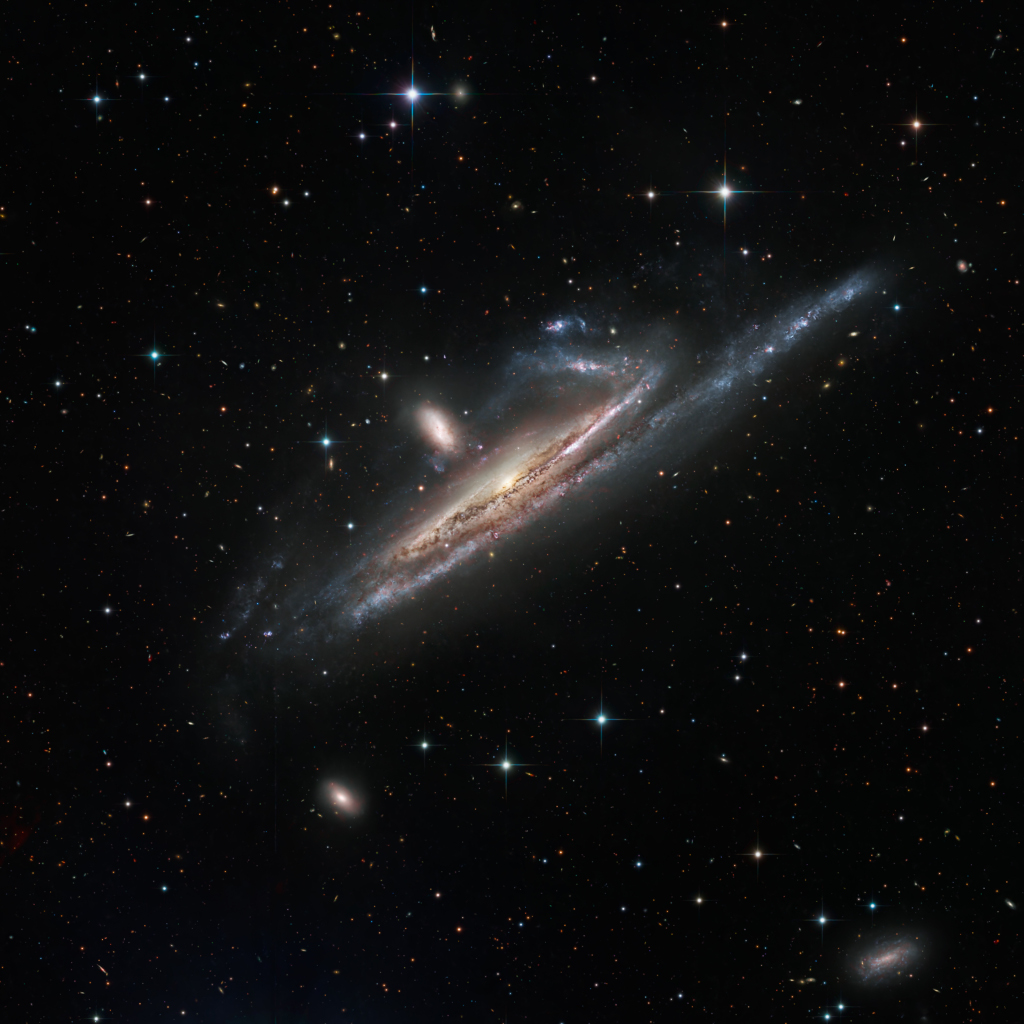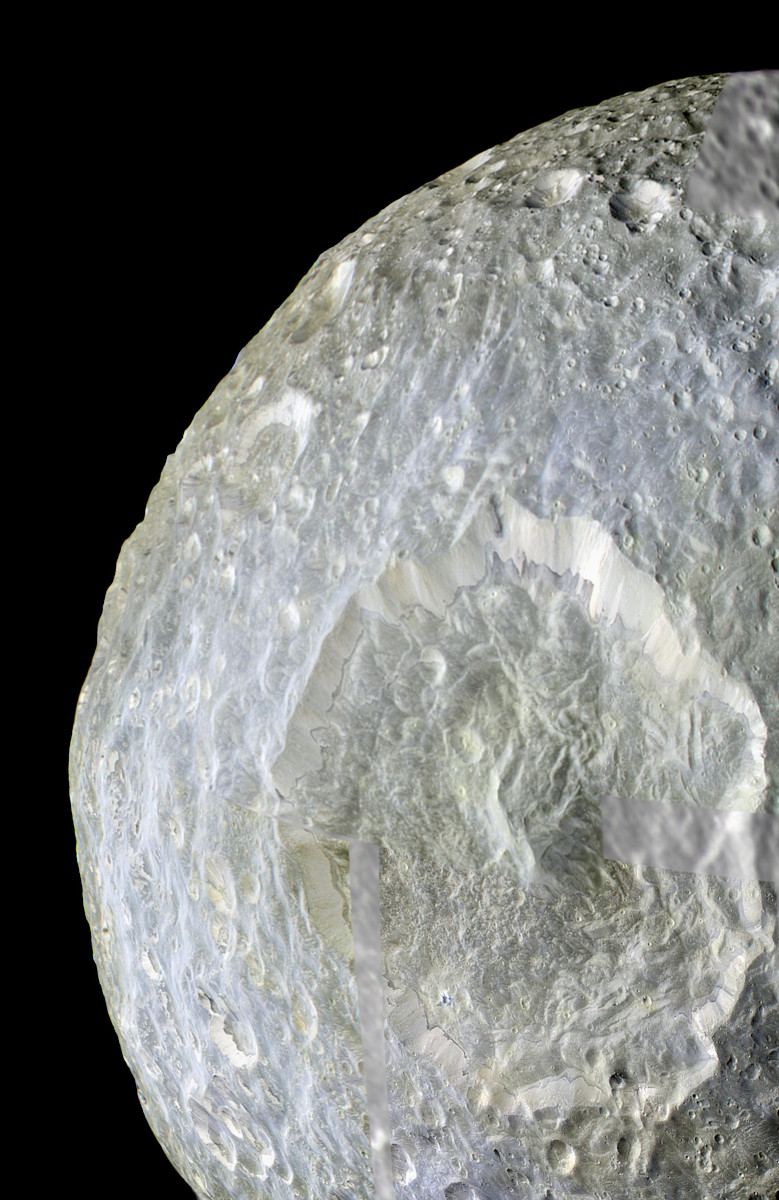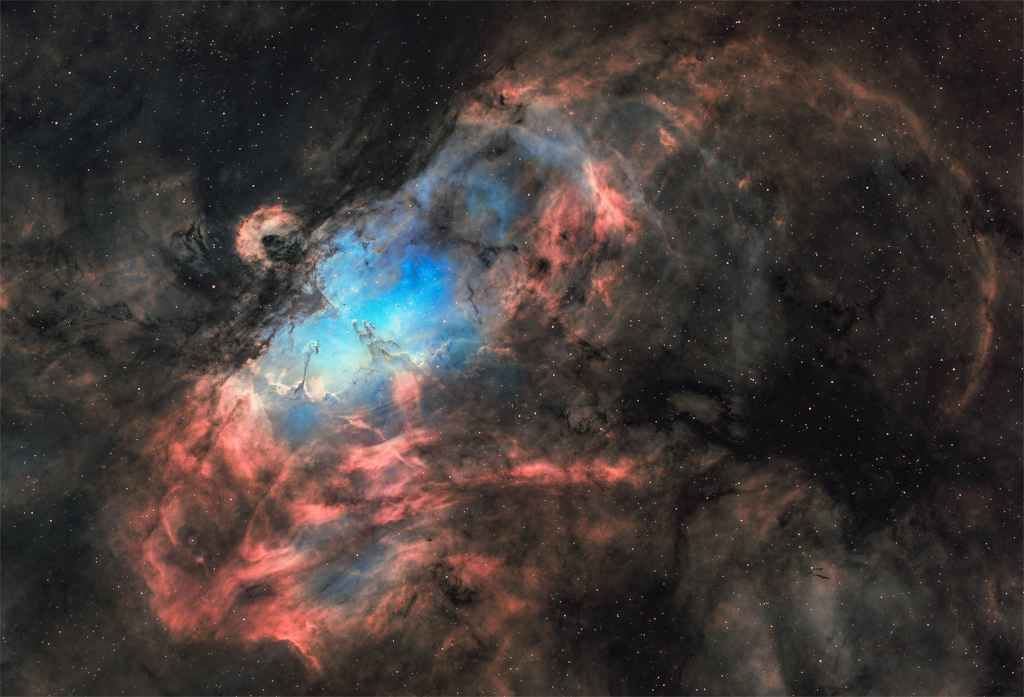TopSanté
Nombre total de pages vues
15/08/2022
SANTé/MEDECINE - Une mâchoire imprimée en 3D vient d'être greffée
TopSanté
ASTROPHOTOGRAPHIE - Dentelles du cygne
VOIE LACTEE SUR TERRE - Chichén Itzá, ancienne ville maya, Mexique
MERVEILLEUX MONDE SOUS-MARIN - Mérou dans sa tannière

ASTRONOMY - The Cygnus Wall of Star Formation
2022 August 15
Image Credit & Copyright: Johan Bogaerts
Explanation: The North America nebula on the sky can do what the North America continent on Earth cannot -- form stars. Specifically, in analogy to the Earth-confined continent, the bright part that appears as Central America and Mexico is actually a hot bed of gas, dust, and newly formed stars known as the Cygnus Wall. The featured image shows the star forming wall lit and eroded by bright young stars, and partly hidden by the dark dust they have created. The part of the North America nebula (NGC 7000) shown spans about 15 light years and lies about 1,500 light years away toward the constellation of the Swan (Cygnus).
14/08/2022
ASTRONOMY - 4000 Exoplanets
2022 August 14
Video Credit: SYSTEM Sounds (M. Russo, A. Santaguida); Data: NASA Exoplanet Archive
Explanation: Over 4000 planets are now known to exist outside our Solar System. Known as exoplanets, this milestone was passed last month, as recorded by NASA's Exoplanet Archive. The featured video highlights these exoplanets in sound and light, starting chronologically from the first confirmed detection in 1992 and continuing into 2019. The entire night sky is first shown compressed with the central band of our Milky Way Galaxy making a giant U. Exoplanets detected by slight jiggles in their parents-star's colors (radial velocity) appear in pink, while those detected by slight dips in their parent star's brightness (transit) are shown in purple. Further, those exoplanets imaged directly appear in orange, while those detected by gravitationally magnifying the light of a background star (microlensing) are shown in green. The faster a planet orbits its parent star, the higher the accompanying tone played. The retired Kepler satellite has discovered about half of these first 4000 exoplanets in just one region of the sky, while the TESS mission is on track to find even more, all over the sky, orbiting the brightest nearby stars. Finding exoplanets not only helps humanity to better understand the potential prevalence of life elsewhere in the universe, but also how our Earth and Solar System were formed.
ASTRONOMY - Herschel Crater on Mimas
2022 August 13
Image Credit Cassini Imaging Team, ISS, JPL, ESA, NASA
Explanation: Mimas, small 400 kilometer-diameter moon of Saturn, is host to 130 kilometer-diameter Herschel crater, one of the larger impact craters in the entire Solar System. The robotic Cassini spacecraft orbiting Saturn in 2010 recorded this startling view of small moon and big crater while making a 10,000-kilometer record close pass by the diminutive icy world. Shown in contrast-enhanced false color, the image data reveal more clearly that Herschel's landscape is colored slightly differently from heavily cratered terrain nearby. The color difference could yield surface composition clues to the violent history of Mimas. Of course, an impact on Mimas any larger than the one that created the 130-kilometer Herschel might have destroyed the small moon of Saturn.
12/08/2022
MERVEILLEUX MONDE SOUS-MARIN - Ponte de gorgone rouge

Méditerranée - France - Archipel des Iles d'Hyères - Ile du Levant.
Ponte de gorgone rouge (Paramuricea clavata - Purple gorgonian).
© Alexis Rosenfeld
ASTRONOMY - Portrait of the Eagle Nebula
2022 August 12
Image Credit & Copyright: Charles Bonafilia
Explanation: A star cluster around 2 million years young surrounded by natal clouds of dust and glowing gas, Messier 16 (M16) is also known as The Eagle Nebula. This beautifully detailed image of the region adopts the colorful Hubble palette and includes cosmic sculptures made famous in Hubble Space Telescope close-ups of the starforming complex. Described as elephant trunks or Pillars of Creation, dense, dusty columns rising near the center are light-years in length but are gravitationally contracting to form stars. Energetic radiation from the cluster stars erodes material near the tips, eventually exposing the embedded new stars. Extending from the ridge of bright emission left of center is another dusty starforming column known as the Fairy of Eagle Nebula. M16 lies about 7,000 light-years away, an easy target for binoculars or small telescopes in a nebula rich part of the sky toward the split constellation Serpens Cauda (the tail of the snake). As framed, this telescopic portrait of the Eagle Nebula is about 70 light-years across.
ASTRONOMY - Galaxies in the River
2025 December 11 Galaxies in the River Image Credit & Copyright : Vikas Chander Explanation: Large galaxies grow by eating small on...

-
2022 September 26 All the Water on Planet Earth Illustration Credit: Jack Cook, Adam Nieman, Woods Hole Oceanographic Institution ; Data ...
-
2025 May 11 The Surface of Venus from Venera 14 Image Credit: Soviet Planetary Exploration Program , Venera 14 ; Processing & Copyri...





